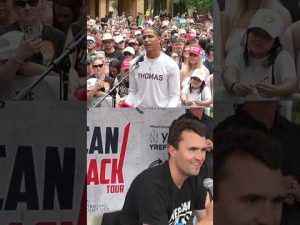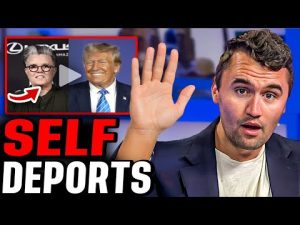**Trump Presses Pause on Tariffs: A Financial Rollercoaster Amid Market Jitters**
In a surprising turn of events, President Trump took center stage recently, pressing the “pause” button on tariff implementation. While the overall 10% tariff on Chinese goods remains intact, countries like Vietnam, South Korea, Japan, and even Madagascar are seeing a temporary halt in these financial strains. This move, however, isn’t without its consequences. As the market experiences dizzying highs and lows reminiscent of a rollercoaster, investors are left in a whirlwind of uncertainty, unsure of what the next day will bring.
Behind the scenes of this economic decision lies the intricate world of bond markets. Generally overshadowed by stocks, bonds play an enormous role in the nation’s financial health. Bonds represent loans that individuals or organizations give to the government with the promise of repayment plus interest. The U.S. Treasury bonds, in particular, are seen as the “gold standard” of investments due to their historical consistency and the unwavering backing of the American government. Yet recent shifts—especially a spike in bond activity linked to China’s maneuvers—have caused some eyebrows to raise, signaling potential trouble ahead.
What many folks might not know is that bonds can be a safe refuge during times of financial turmoil. When fear grips the stock market, savvy investors often retreat to bonds, considering them a stable alternative. However, amid current economic jitters, the bond market appears to be experiencing its own unique set of challenges. With China seemingly attempting to undermine U.S. bonds, the stakes have never been higher. Trump’s decision to pause tariffs could very well be seen as a strategic move to stabilize confidence in American economic stability.
Interestingly, there are experts within the administration, like Treasury Secretary Scott Bessant, who acknowledge the complexities of this situation. Bessant’s extensive knowledge of bonds is proving essential in navigating these treacherous waters. Recent favorable auction results show some investors remain confident in the long-term view of the economy; however, uncertainty looms for shorter-term investments. This contradiction is like trying to find one’s way through a maze—thrilling yet unnerving.
As the financial landscape shifts, other players in the global economy are also taking note. The Panama Canal, a vital artery for maritime trade, is now at the forefront of U.S. geopolitical strategy. With concerns over China’s influence in the region, moves are being made to protect this crucial asset. If the U.S. can successfully assert its position, it may not only uphold American interests but potentially liberate the Canal from foreign control. The stakes are high, and Trump’s administration appears poised to act decisively against economically coercive tactics.
In conclusion, President Trump’s pause on tariffs serves as both an immediate relief and a long-term strategy in a complex economic theater. While markets fluctuate like a seesaw, the administration is engaging in tactics that could ensure a favorable outcome for the U.S. economy. As investors keep a keen eye on bonds and other economic indicators, the world waits to see how this latest chapter unfolds. It’s a mad, mad financial world out there, but amid the chaos, there lies a chance for a victory with American grit leading the charge.







